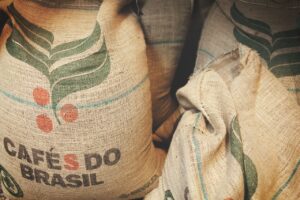COCOA
The general feeling among growers in west Africa is that weather conditions are conducive for a decent crop, certainly much better than a year ago, when they were plagued by too much rain and not enough sunshine. Ivory Coast farmers interviewed by Reuters said they expected the October-March main crop to start early in most growing regions because soil is still moist enough to allow cocoa trees to grow and that the recent dry spell was helping flowers turn into small pods. They expect a stronger production for the first half of the season than last year. Second quarter grind data from North America and Asia is due out on Thursday, and traders will be watching that to see if demand has been affected by the high prices. The European number released last week came in 4.1% higher than a year ago, versus expectations for a decline, and the market managed a one-day rally off that news. There was a report yesterday that some trading houses face losses of at least $1 billion after Ghana failed to deliver beans this year. The poor crop forced the Ghana regulator COCOBOD to push deliveries into next season.
COFFEE
Concerns about dry weather persist in Brazil’s coffee major growing regions, and there is little relief in sight. Last week, the Brazilian trade group Cecafe said it has lowered its forecast for the nation’s arabica crop by 5% from previous forecasts and the robusta crop by 10%. The dry weather has gotten the harvest off to a fast start, but there have been anecdotal reports of smaller bean sizes. Warm and dry conditions are expected across Brazil over the next 10 days, with temperatures 2-4 degrees Celsius above normal and precipitation 0.2-0.4 inches below normal. Vietnam could get some heavy rain this week, as a tropical cyclone is expected to develop off their coast which could help the development of their robusta crop. ICE arabica stocks declined by 2,199 bags yesterday to 803,167, their lowest since June 11.

COTTON
US crop conditions held steady last week, and the weather forecast is not very threatening. December Cotton saw a short covering rally yesterday after the Commitments of Traders report on Friday showed the fund net short was once again approaching record levels. Traders were also impressed that the market held a test of the 70-cent level for a second time last week. Cotton may have also drawn support from the stock market, which made new highs.
The weekly Crop Progress report showed 45% of the US cotton crop was rated good/excellent as of July 14, steady with the previous week and a year ago. The five-year average for this week is 50%. Texas was 34% G/E, down slightly from 35% last week but above 26% a year ago . Georgia was 58% G/E, up from 55% last week but down from 67% a year ago. Mississippi 49% G/E, down from 53% last week and 73% a year ago. North Carolina was 40% G/E, up from 35% last week but down from 64% a year ago. 64% of the crop was squaring versus 61% a year ago and 63% on average. 27% was setting bolls versus 23% a year ago and 22% on average. Last year, conditions steadily worsened through the summer as the drought in Texas expanded, but the current 6-10 and 8-14-day forecasts call for above normal chances of rain across the cotton belt, which should help alleviate dry conditions in west Texas and the southeast.
SUGAR
Rains in Center South Brazil over the last couple of weeks are believed to have slowed the cane harvest, but they should be beneficial in the long run. Conditions look drier over the coming two weeks, which should allow harvest to resume. Last week’s UNICA report showed Brazilian Center-South sugar production for the second half of June was the strongest so far this season, and total production since the marketing year is up 15.7% from last year. The dry conditions this year that have brought a strong early harvest also bring the risk of lower yields. The Indian Monsoon is likely to intensify in the second half of July and into August, which is viewed as beneficial for their crop. Last year’s disappointing monsoon lowered their sugar output and led the government to restrict exports, so a strong monsoon this year could increase the chances that India may offer some for export. On the other hand, the government also wants to support the domestic ethanol industry, which would limit sugar export. Thailand is receiving decent rain this season after their poor crop last year.
Interested in more futures markets? Explore our Market Dashboards here.
Futures and options trading involve significant risk of loss and may not be suitable for everyone. Therefore, carefully consider whether such trading is suitable for you in light of your financial condition. The information and comments contained herein is provided by ADMIS and in no way should be construed to be information provided by ADM. The author of this report did not have a financial interest in any of the contracts discussed in this report at the time the report was prepared. The information provided is designed to assist in your analysis and evaluation of the futures and options markets. However, any decisions you may make to buy, sell or hold a futures or options position on such research are entirely your own and not in any way deemed to be endorsed by or attributed to ADMIS. Copyright ADM Investor Services, Inc.
